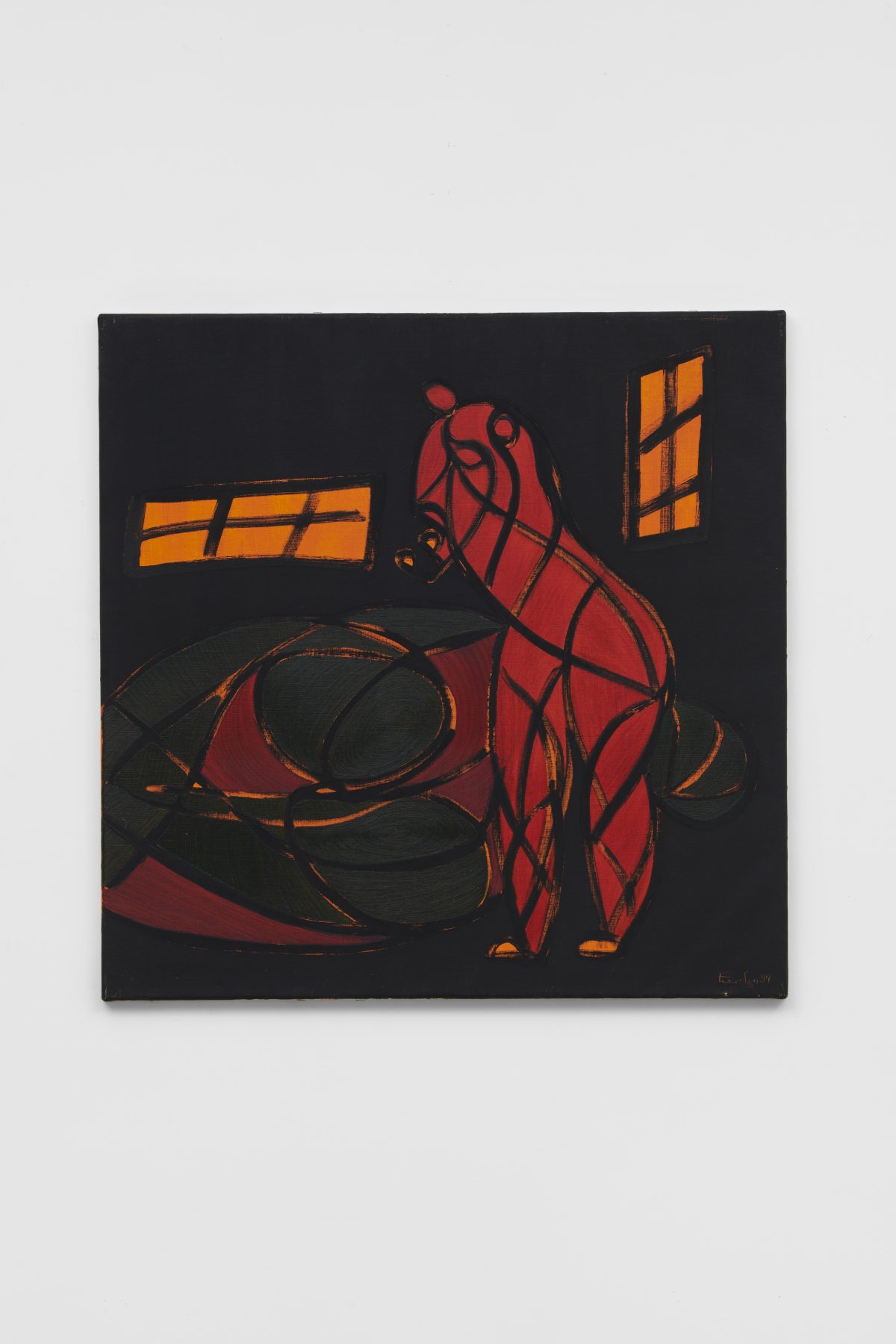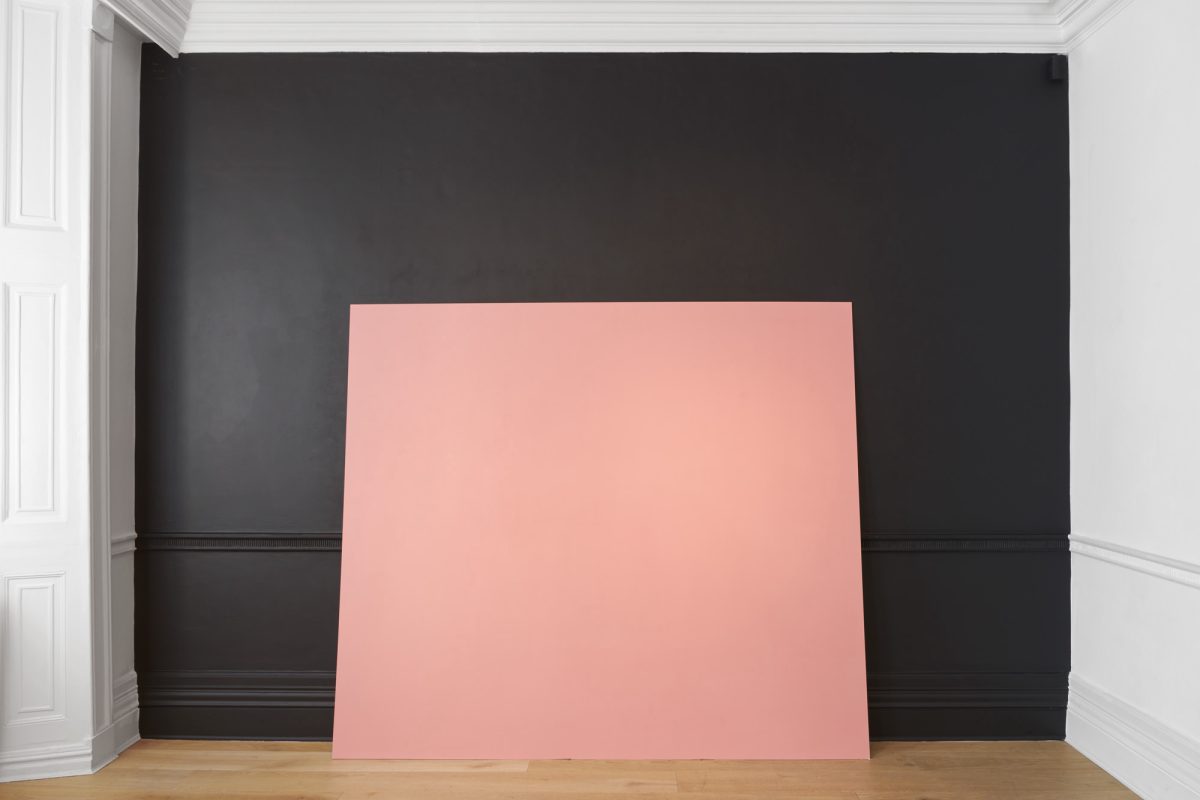
LONDON — In a year when much of the world as we know it has been on its knees, is it not a bold, if not almost otherworldly, move for a small gallery to devote an entire year of exhibitions to Hannah Arendt, a famous thinker whose works we all aspire to read in depth some day soon?
And why now anyway?
We might well ask.
The series is called On Hannah Arendt: Eight Proposals for Exhibition at London’s Richard Saltoun Gallery. There is no specific peg on which to hang the story. Unlike the poet Dante, whose greatness we are wildly celebrating throughout this year, she did not die almost exactly 700 years ago. Unlike the art critic John Ruskin, whose greatness we were all wildly celebrating throughout last year, she was not born a little over 200 years ago. Hannah Arendt died in 1975, recently enough for some of us to have known her.
The entire enterprise feels 100 percent high-minded, shot through with a level of dedication to the sanctity of ideas that museums can seldom afford to aspire to these days, given that they are stone broke.
The series — it is already well underway! — will involve the participation of about 40 artists, many of them already represented by the gallery, others not. There will be eight shows in all, and they will all gently orbit like small, contented satellites around a book that Arendt published in two editions, 1961 and 1968, called Between Past and Future.
She subtitled the second edition Eight Exercises in Political Thought because it is a book of intellectual exploration, a book in which the author discovers what she thinks about things by writing them down. That was her way. She was after not truth, but meaning.

Why eight shows? Because that book has eight chapters, and the shows, one by one, will loosely explore the themes of those chapters. They will include such matters as these: the nature of authority; the concept of history; the modern age. And the shows are not the full extent of this gallery’s 12-months’ long commitment to the legacy of Arendt either. There also are regular, online discussion groups (you can join in too), talks, interviews and lectures, often with the active participation of Roger Berkowitz, the Academic Director of the Hannah Arendt Centre at Bard College, that bucolic campus two hours north of New York City.
What sort of a thinker was Arendt then? Although you can call her philosophical – most do, especially those who have not yet read her yet feel a pressing, deadline-driven need to define her achievements pithily (journalists, for example) — she was not really a philosopher because her work was not systematic enough. In fact, she herself denied that she was a philosopher.
She thought a lot about what we might loosely and tentatively describe as philosophical issues — the nature of truth and morality, for example — but all her musings were grounded in and conditioned by her understanding and her experience of the flux of history, everything that happens out in the world at large, often so polluted by evil human behavior.
Her ideas are always grounded in the fate of individual human beings. She was not a dealer in philosophical abstraction, in which meaning gets lost in a web of incomprehensible language. She was a German Jew, driven from her homeland in the 1930s, who prospered in the United States, that land of refuge, and the fact of her being a refugee and an exile, an escapee from atrocity, informs her writing immeasurably.

The artists in the show are equally gender-balanced (roughly), and they are international in range. Some of the exhibitions are group shows, others solo presentations. The second of the eight shows featured the work of Peter Kennard, a British artist who describes himself as a visual historian, and its theme was the slippery nature of history, and how the concept of history is forever being invented and then re-invented. History as process, then. The third is a group show devoted to an examination of the question of authority — in whose name is it wielded? — which features paintings by Everlyn Nicodemus (Tanzania), text and fabric works by Lerato Shadi (South Africa), and two works by Lili Dujourie (Belgium).
The first of Dujourie’s two works is a small and grainy film showing her naked form turning on a bed, the second a muscular sculptural intervention – a plate of pink-painted steel, leaning against a wall, which has been painted black –that tosses a brick in the general direction of the males who dominated Minimalism. This is interesting and slightly surprising, the fact that a pugnacious feminist work has been drawn into the orbit of Arendt’s book.
The finest, most hard-hitting, and most dramatically staged work in the entire show is a text-cum-neon work by Lerato Shadi called Batho ba me (2020).She paints the opening phrase of the preamble to theUS Constitution – we the people – on the wall, and then adds, in red neon, the word “Are” at the beginning and a question mark at the end, so that the statement is transformed into a challenge demanding heart-searching self-scrutiny — on the part of ourselves, and of those we trust to govern in our name: Are We the people?
*

I have been considering the case and the person of Hannah Arendt for a few weeks now — lockdown in London meant that the first show could never actually be seen in the flesh. My homework has included reading Between Past and Future in its entirety, andup to page 57 of The Origins of Totalitarianism (1951).
As I stalled at that page and stared ahead in my mind’s eye to the next 650 pages, I began to think about a conversation I had once had with the novelist Iris Murdoch at her home in north Oxford. The tape recorder was off. We had done the hard graft of the interview. We were chatting. I mentioned, rather tentatively, that her later books seemed to be getting longer and longer. I did not add the words that I might have added: much to their detriment, I fear, Dame Iris. Did she work with one particular editor? I ask, ever the soul of tact, on a good day. Editors? What are they for? she replied with some vehemence. I feel the same way about The Origins of Totalitarianism.
*

The other issue which continues to buzz around my head is the no-holds-barred idealism of this yearlong celebration of Arendt, with its wholly admirable air of educational self-advancement. In short, how the devil did they pay for it?
I decide to confront the gallery’s owner, Richard Saltoun, head-on about this. He bounces out of the back office with zest and good cheer, in blue jumper and Levis, roaring along in his slightly scuffed, off-white sneakers, the very soul of delightfully unbuttoned outspokenness — in fact, the very antithesis of those many dealers who sleep unsoundly in black-framed spectacles and dark, well cut suits.
By flipping works on the secondary market! he tells me. All the art dealers do it, even the greatest of them. Had I read a book by Philip Hook called Rogues’ Gallery (2017)? Not yet. It’s all about what dealers get up to in order to earn a living, even the ones who regard themselves as experimental and cutting-edge.
The routine is this: you show Otto Dix in the front window as that money-making Renoir leaves by the back door. That sort of thing.Dealers don’t really like to talk about such things because there’s so much snobbery abroad. If you deal on the secondary market, you are not quite pure…
The other point is this: you also deal on the secondary market in order to indulge the intellectual pleasures involved in staging a series of shows tied to Hannah Arendt. It’s rare to find a show that is about the art and not the artist, as a longtime London dealer (and alleged sexual harasser) said to him once, he tells me, suggesting that this might well be the case here. This is serious stuff, with some heavy content! he adds.
And was this series of shows the gallery’s brainchild? Had he and his team shaped it? Well, yes and no. There was a brilliant curator behind the scenes, he tells me, a man unacknowledged in the press handouts. He was the man who had suggested that the show be linked to Between Past and Future because of the nature of that book, the fact that it had eight chapters, which in turn suggested eight separate themes, and therefore eight separate exhibitions.“If I had done it on my own, it would have been full of clichés, with lots of literal referencing – maybe a portrait of Arendt by Marlene Dumas, that sort of thing.”
On Hannah Arendt: Eight Proposals for an Exhibition continues at the Richard Saltoun Gallery (41 Dover Street, London, England) through December 2021. The third proposal, What Is Authority? continues through June 6.
0 Commentaires